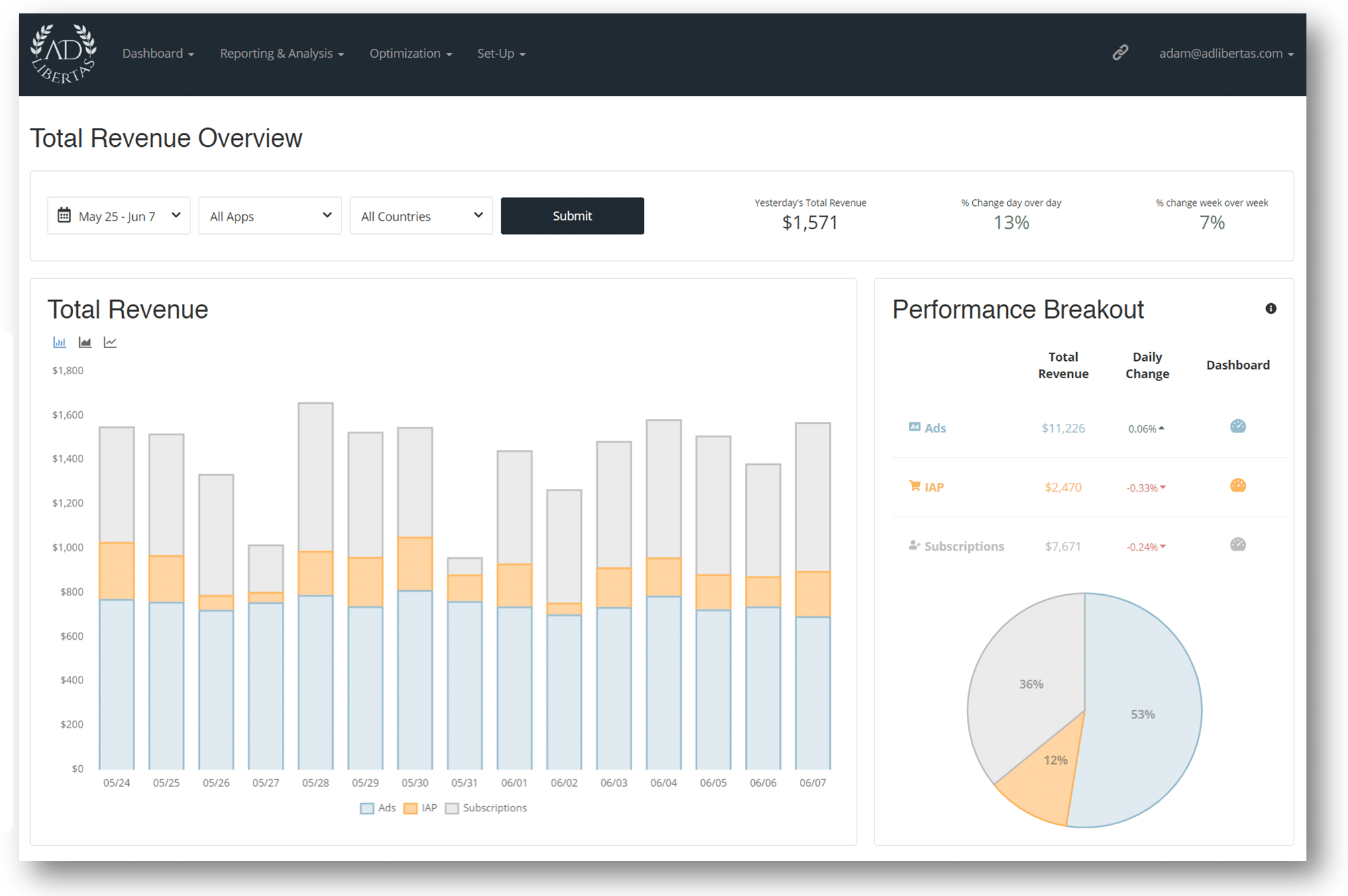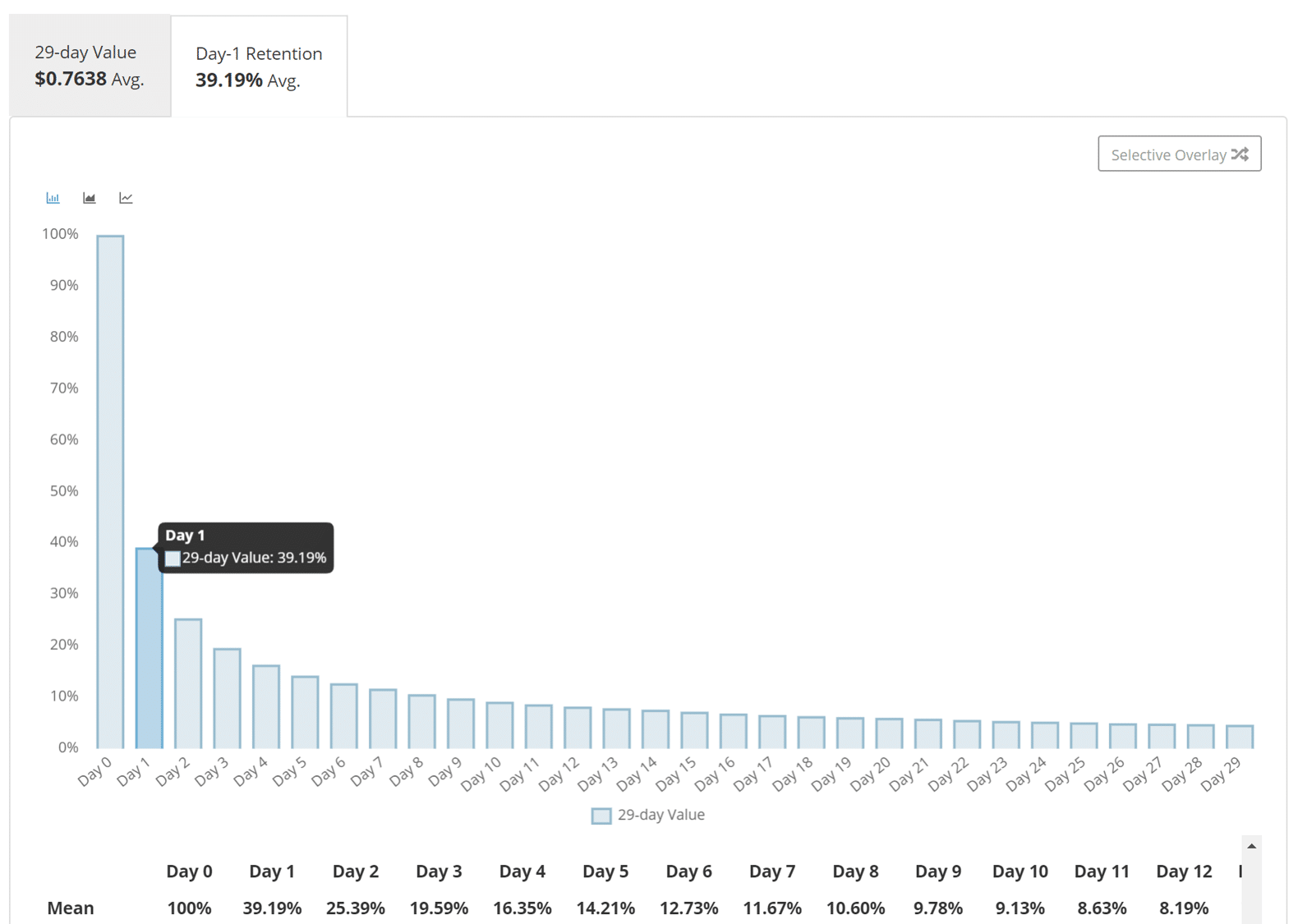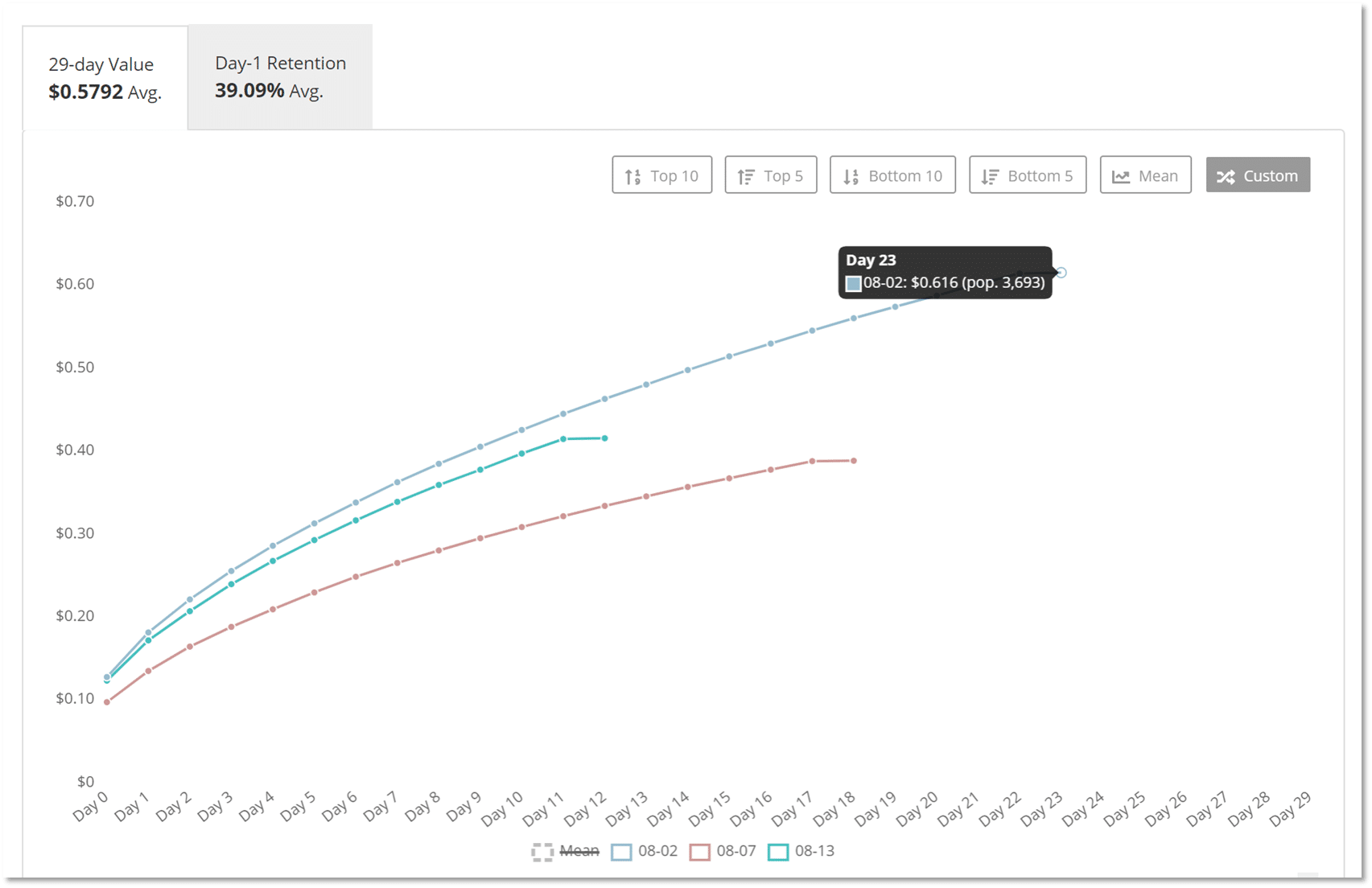The first-step to buying installs for your mobile app? Understand your investment.
At AdLibertas we see all types of clients — from the smallest indies to the very largest of apps– often asking the same questions. Growth is the universal interest of all mobile app developers, clients embarking on the journey of buying app users & installs often ask us “how much should I pay for a user?”
Industry benchmarking, such as this recent study by Business of Apps, shows the average CPIs for both iOS and Android apps are less than $1.00.
But while industry benchmarks may be indicative of the cost of buying a user, they don’t indicate whether that user will be profitable. App developers must understand the lifetime value (LTV) of users to determine how much to pay for a new user. The simple truth: in order to buy installs for your app, you need to understand how much a user is going to make for you.
The LTV of the users can be broken down into 2 parts: daily revenue and daily retention.

Photo by Nicolas Hoizey on Unsplash
We’ve seen every iteration of revenue breakdowns possible, from apps making 99% from in-app purchases to 99% earned from in-app ads. While the average is around 50/50, your app may differ, and that’s alright.
We recommend you keep the bulk of your earnings in mind as you optimize your campaigns (and app updates). It may not make sense to spend your time optimizing your IAP prices if it makes up 5% of your revenue – you may be far better off optimizing ad CPMs, even if it’s just a few percent.
Daily Revenue
App revenue can come from a variety of sources – ad networks, app store purchases and subscriptions are the most common.
App developers need to stay on top of their revenue on a daily basis to ensure there aren’t big changes, and that the revenue is consistent enough to measure and reliably forecast.
- Gather your earnings: in order to track user value, you need a complete view of all revenue. This includes Ad revenue, in-app purchases or any subscription revenue.
- Calculate Revenue per User (ARPDAU): Dividing your revenue by your number of users will give you the daily revenue per daily active user. This will tell you how much each user is earning you on a daily basis.
Daily Retention
App developers need to monitor their daily retention, to understand how users stay engaged with the app over time, and when the majority of users have “churned” or stopped using regularly engaging with the app.
Calculate user-retention: This is the number of users who return to your app on a daily basis after install. Many analytics providers (Firebase) will give you retention information broken-out by user install-date.
Calculate LTV: At it’s most straight-forward LTV total revenue / total users — which isn’t very helpful. To get an accurate LTV of a group of users on a given day (n) you need to calculate the ARPDAU * the number of users in the cohort * the churn summed for each day 1-n. This is your lifetime user-value, and this is how much your average user makes for your app.
Churn is a sad reality of mobile apps. No matter how many users you push into the app, a (large) percentage will quickly leave. We cover some recommendations on where to focus depending on your app’s characteristics in another article.
Besides just calculating the LTV, there are some important considerations:
The less information you have to predict your user-value the more varied your longer-term outcome can be. There’s no magic formula to the process, your investment will carry some risk, it’s up to you to get comfortable and manage that decision.
Payback Period: how long are you willing to wait to breakeven on a user, and is it realistic? For example, you may calculate it takes 12 months to breakeven – can you afford to wait that long?
Data Density: How much data will you need to get reliable measurements of the retention and LTV, and how much uncertainty are you comfortable with when buying users? For example, it’s not uncommon for less than 10% of users to still be engaged 2 weeks after installing the app – if LTV is being calculated against a milestone several months out, it can take a very long time to gain a critical mass of users that hit that milestone.
We wrote this article to give some beginning advice on growing users. If you’re interested on how AdLibertas tools can help you manage your risk, measure your investment and help you succeed, reach out or start a free trial today!
Interested?


